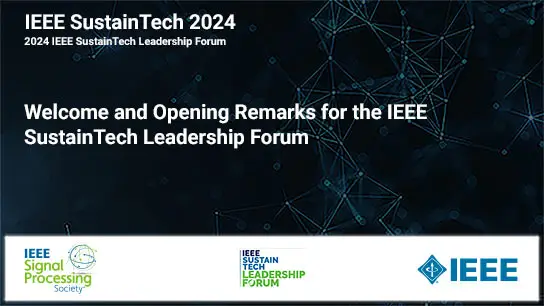-
Members: FreeSPS
IEEE Members: $11.00
Non-members: $15.00Length: 01:02:57
08 Jun 2021
The commercial launch of 5G in 2019 ushered in a new era for wireless technology, with the promise of higher throughput, lower latency and diverse use cases. Today more than 100 operators worldwide have either commenced or completed the initial phase of 5G deployment, despite the ongoing challenges from the public health crisis. While the wireless research community enjoys the moment of collective accomplishment, the natural question to ask ourselves is “What’s next”? With the recent history and experience on 5G as our guide, we will share our perspective and shed some light on the state of the art for 5G as well as the initial 6G vision of bringing the next hyper-connected experience to every corner of life. We intend to provide a holistic view from an industry perspective that includes megatrends driving technology evolution towards 6G, new services envisioned and enabled, as well as technical requirements to realize these new services. The expected technical requirement on throughput, architecture and security will likely be a major step up compared to 5G requirements, and it is therefore critical for the research community to start early and develop technologies to overcome these challenges. While 6G technologies are still in its early days, a few emerging directions are taking shape and gaining momentum in academia and industry alike, including the support of a new spectrum such as Terahertz (THz) band, novel an¬tenna technologies, evolution of duplex technology and network topology, spectrum sharing, AI as a native part of the protocol design, etc. In addition to the conventional role of RF circuits in communication and information exchange, another promising direction is the use of RF signals for privacy-preserving secure sensing and ranging. Ultra-Wideband (UWB) technology is a good example where the unique combination of precision and protection is likely to become the basis for secure transactions of all kinds. UWB shows promise for the evolution of secure transactions in mobile devices, by driving the convergence of hands-free access, location-based services, payments, identification, and device-to-device interactions. The FiRaTM Consortium is actively leading the rapid industry adoption of UWB technology through ecosystem building and development of technical specifications and certification programs. This trend of convergence between RF-based communications and sensing will likely accelerate as we explore THz bands, where dense arrays can greatly improve the spatial resolution of these RF sensing solutions and narrow the gap with other modalities.



